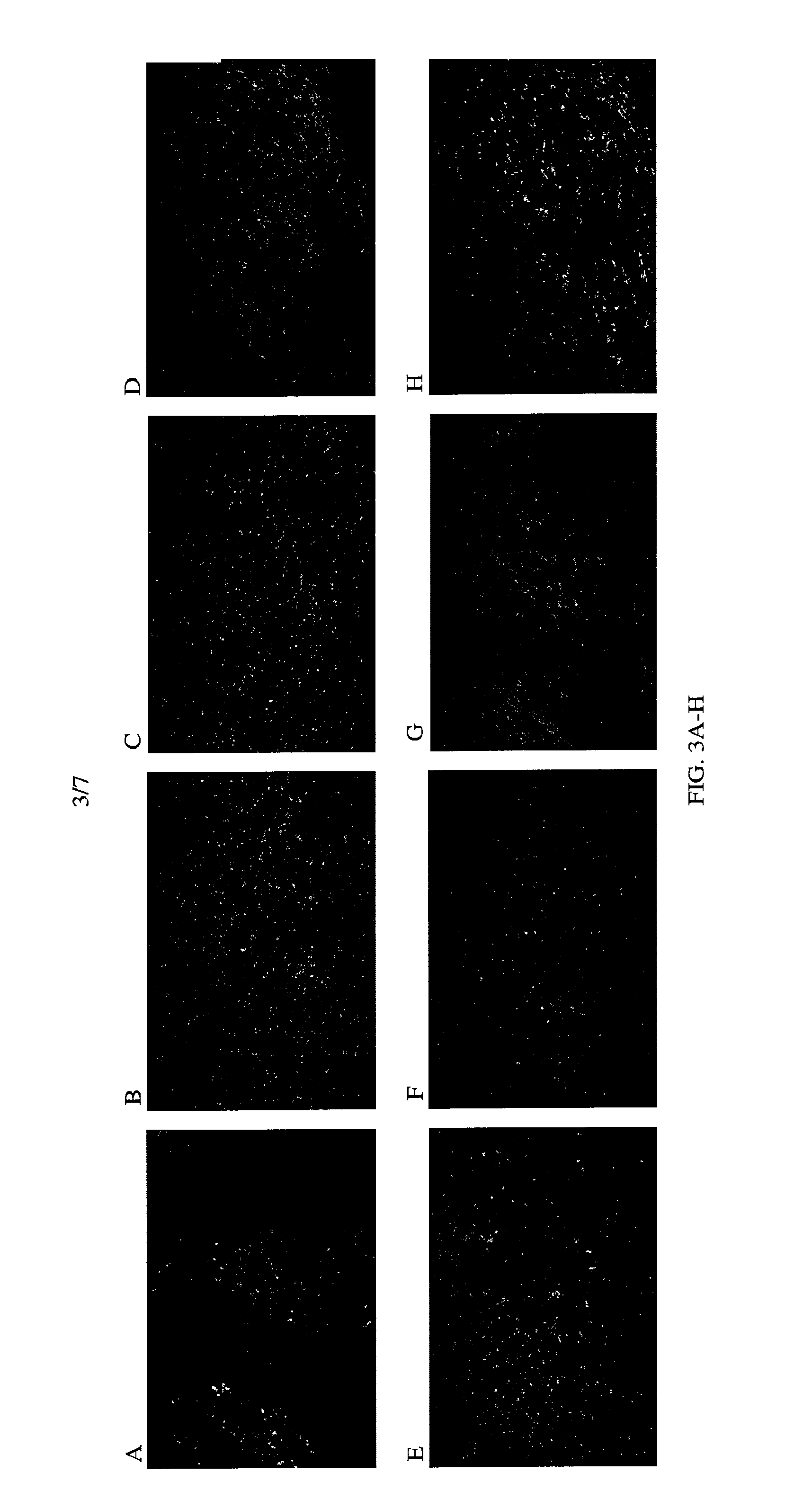High potency recombinant antibodies, methods for producing them and use in cancer therapy
a recombinant antibody, high-potency technology, applied in the direction of antibody medical ingredients, drug compositions, peptides, etc., can solve the problems of inability to progress deeper into the tumor or away from the blood vessels, difficulty in detecting recombinant antibodies, and inability to achieve good tumor penetration
- Summary
- Abstract
- Description
- Claims
- Application Information
AI Technical Summary
Problems solved by technology
Method used
Image
Examples
example 1
Cloning of Parental Antibody into Phage Vector
[0136]The VL and VH genes of the parental antibody can be cloned into one M 13-based phage vector under the control of the lacZ promoter by hybridization mutagenesis, methods well-known to those of skill in the art (see Kunkel T. A. PNAS 82, 488-492 (1985), herein incorporated by reference). The vector will contain the backbone of the human kappa constant region (Cκ), the first constant region of the human γ1 chain (CH1), and two annealing sites for the cloning of VL and VH genes. The vector should also contain a pel B leader sequence for the light chain and a pho A leader sequence for the heavy chain to target the expressed Fab fragments into periplasmic space in E. Coli.
[0137]Briefly, the forward primers for both VL and VH genes can be biotinylated to facilitate the purification of minus-strand V genes at the later step for annealing into phage vector. The forward primers contain sequence specific to the framework 1 region and an over...
example 2
Construction of Focused CDR Libraries
[0139]For CDR library construction, the parental CDR region needs to be deleted first to avoid the domination of the library by the parental clone. In a successful single-site hybridization mutagenesis, the mutagenesis rate is usually between 50-80%. If the parental antibody is used as a template for the library construction, there will be 20 to 50% of the library population that is parent, and this will increase the difficulty of screening. The CDR region can be deleted by mutagenesis (see id). The oligonucleotide for mutagenesis is designed to replace the CDR region with a stop codon (TAA) and an extra nucleotide (A) to cause a frameshift. After the ΔCDR is made, it is used as a template for the construction of its corresponding CDR library. Altogether six CDR-deleted templates can be made corresponding to individual CDR libraries. To construct focused CDR libraries, the codon-based mutagenesis approach can be used to synthesize the oligonucleo...
example 3
Kon Driven Screening by SPE
[0144]Developing a reliable assay to screen for the variants with improved Kon values is more difficult than developing an assay to screen Koff-based improved clones. In the current example, the ELISA assay, Kon SPE is established as described in Wu, H. and An, L. Methods in Molecular Biology 207:213-233 (2003), herein incorporated by reference.
[0145]To select for variants with improved Kon value, both the association and dissociation time need to be as short as possible (preferably ≦10 minutes total). Usually this process will result in a weak signal output. A signal amplification step may be added to increase the signal to noise ratio, using any readily available technique well-known to the skilled artisan.
[0146]First, coat Immunlon 1B plate with goat anti-human kappa antibody at 1 ug / mL in carbonate coating buffer at 4° C. overnight. Tap out the coating solution. Block with 1% BSA / PBS (200 uL / well) for 1 hour at RT. Remove the BSA, and add 200 uL of Fab...
PUM
| Property | Measurement | Unit |
|---|---|---|
| dissociation constant | aaaaa | aaaaa |
| dissociation constant | aaaaa | aaaaa |
| dissociation constant | aaaaa | aaaaa |
Abstract
Description
Claims
Application Information
 Login to View More
Login to View More - R&D
- Intellectual Property
- Life Sciences
- Materials
- Tech Scout
- Unparalleled Data Quality
- Higher Quality Content
- 60% Fewer Hallucinations
Browse by: Latest US Patents, China's latest patents, Technical Efficacy Thesaurus, Application Domain, Technology Topic, Popular Technical Reports.
© 2025 PatSnap. All rights reserved.Legal|Privacy policy|Modern Slavery Act Transparency Statement|Sitemap|About US| Contact US: help@patsnap.com



